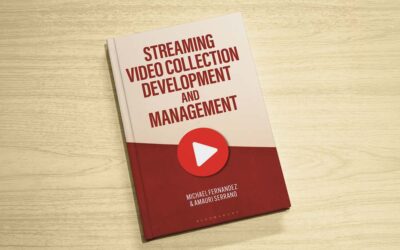Interview with the Authors: Aspray and Cortada, Authenticity and Misinformation
Lauren Hays
William Aspray and James W. Cortada are the authors of Authenticity: Understanding Misinformation through the Study of Heritage Tourism (Lanham, Md.: Rowman & Littlefield, 2022). My interview with them is below:
1. Please introduce yourselves to our readers.
William (Bill) Aspray and Jim Cortada are senior research fellows at the Charles Babbage Institute at the University of Minnesota—Twin Cities. Bill has been studying and publishing on the subject of information for decades and has taught in information studies programs as well. Jim Cortada is also a historian of information and of computing and business management uses of facts. The two have collaborated on several book projects related to the rise and use of false facts and misinformation in modern times.
2. Briefly summarize Authenticity: Understanding Misinformation Through the Study of Heritage Tourism.
We look at the information that people receive and use in the world of heritage tourism, such as battlefields and historic sites. We ask, can students of information, and more specifically misinformation, acquire new ways to understand this issue by looking at what scholars of tourism do? We look at three case studies of where tourists, guides, and others interpret the history of their sites: Lindsborg, Kansas, Williamsburg, Virginia, and Gettysburg Battlefield Park. Everyone involved brings their own views and expectations to these three experiences, so facts vary. We discovered that tourism scholars have much to teach information scholars, while information experts can offer insights to tourism experts, too. We explore the nature of authenticity and misinformation through the lens of tourism—a novel approach to the study of misinformation. We learned how “settled facts” vary from what, say, a battlefield park historian believes is true and what tourists believe. They vary both in their truthfulness, but also in how facts are interpreted. Authenticity is often accepted if one is standing on the spot where specific historic events occurred, such as where a Virginia governor in the 1700s worked, or where soldiers fought in the Civil War. Museum curators get high marks by all for their work, although they are not immune to controversy and varying interpretations as they go about their work. We also discovered the enormous variety and profound influences of myths as well.
3. Why did you decide to write this book?
We had been studying the role of misinformation in American society for a number of years and found the subject was more than just politicians trying to mislead voters, or advertisers and lobbyists trying to exploit, exaggerate, or mislead officials and the public. The public and professionals also had varying views about the truthfulness of facts. We sought out commonly shared experiences of millions of people and found that we are all tourists bringing to historic sites expectations and beliefs, and are all influenced by mythologies. It seemed a perfect laboratory to study how information varies from one group to another. This study made it possible, too, to learn from other communities of scholars outside of our normal habitat of information studies and history. We uncovered considerable controversy over perspectives. We were able to document the variety of perspectives among librarians, historians, business leaders—even of U.S. government officials and legislators engaged with the topic of heritage tourism.
4. How do you see heritage tourism as relevant to those in the information field (librarians, archivists, museum employees)?
This is an excellent question, because we discovered that all participants in how they viewed an historic site brought an enormous variety of opinions and expectations to the table. For example, a Southerner interpreted who won/lost at Gettysburg differently than, say, a Northerner, or PhD historian of the Civil War, while the U.S. Congress mandated that park historians emphasize certain issues and interpretations of events that were not always well received by some tourists. Were residents in Kansas as authentic in their 19th century Swedish costumes and if not, why not, and how did Swedish citizens visiting Lindsborg react? The point is, those presenting the story—interpretation—of a historic site have difficult choices to make within the confines of messaging, truth, and expectations of all involved. It is a complicated, often changing set of circumstances affecting the work of librarians, archivists, and museum employees. Yet all three have to collaborate. Tourists craved authenticity, but did not always agree on what that meant. Museums seemed to be the only neutral territory because they had objects representing historical accuracy. Archivists did too, if slightly less so, because they had authentic documents of the period, maps, and illustrations. Meanwhile librarians, historians, and tourists constructed their own mental models of what a site looked like and what happened there. With millions of people roaming the land as tourists, the subject of authenticity is an important one.
5. What steps do you hope readers take after reading this book?
If you are a librarian, archivist, museum manager, or historian, understand that you live in a world of varying interpretations of your site; that you will encounter tourists and other interested parties prepared to debate, support, or criticize your work and views; that, therefore, your work is complicated, if not contested. We would recommend that site management take charge of presenting respectfully to the public as accurate a point of view about the truth of what happened at a site as possible. They should also be prepared to engage in dialogue with each other, and not just with tourists, or local business leaders and politicians. Be prepared for whatever points-of-view are expressed to change—as we saw when in the early 2020s, Confederate statues in Virginia went out of fashion and were taken down after a century of veneration.
6. Is there anything else you would like to share?
We found the story of these three case studies fascinating. They were complex collections of interpretations; genuine interest from most people in arriving at a real truth, while applying their expectations to the experiences as tourists or interpreters. As tourists, then later as students of these three sites, we learned how complicated—but interesting—these are, depending on what one’s role is. We will not forget that a young lady in Williamsburg dressed in 18th century regalia wore comfortable twentieth century walking shoes as she led tourists around. Or that in Lindsborg people in 19th century costumes did not reflect the desire of early Swedish pioneers to give up their Swedish dress codes to blend in more with the Americans they wanted to become. But who would see that town as authentically Swedish if nineteenth century residents were presented as farmers wearing blue jeans?
Lauren Hays
Lauren Hays, PhD, is an Assistant Professor of Instructional Technology at the University of Central Missouri, and a frequent presenter and interviewer on topics related to libraries and librarianship. Her expertise includes information literacy, educational technology, and library and information science education. Please read Lauren’s other posts relevant to special librarians. And take a look at Lucidea’s powerful integrated library systems, SydneyEnterprise, and GeniePlus, used daily by innovative special librarians in libraries of all types, sizes and budgets.
Never miss another post. Subscribe today!
Similar Posts
Growing Your Leadership Skills: 7 Tips for Special Librarians
Great library leaders aren’t born—they’re made through learning self-reflection and practice. Here are seven strategies to help you grow and lead with impact.
Keeping Up with Copyright and Generative AI: What Special Librarians Need to Know
As generative AI becomes more prevalent copyright law is evolving to address its impact. A new report from the U.S. Copyright Office provides guidance on what is (and isn’t) copyrightable.
Understanding Shadow AI: Risks Costs and Governance
AI can enhance search discovery and efficiency but unsanctioned adoption—known as “shadow AI”—can lead to budget overruns and compliance risks. Here’s how to evaluate AI pricing models and build a governance strategy that balances innovation with cost control.
Interview with an Author: Fernandez on Streaming Video Collection Development
As demand for streaming video in libraries grows so do the challenges of managing access budgets and licensing. Co-author Michael Fernandez shares key insights from his book “Streaming Video Collection Development and Management”.






Leave a Comment
Comments are reviewed and must adhere to our comments policy.
0 Comments